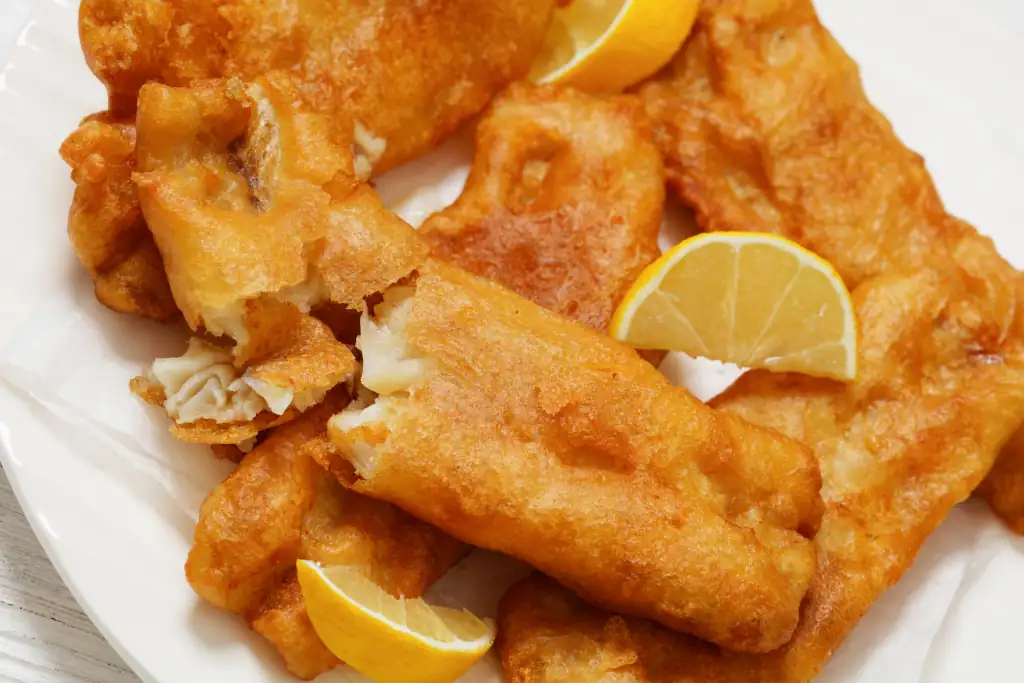
When it comes to crispy coatings that deliver that unmistakable crunch, few options are as satisfying as beer batter and tempura. Both have earned their place in kitchens and on menus across the UK and beyond, but they’re often misunderstood or used interchangeably. From our experience preparing and serving a wide variety of battered dishes, we’ve seen how choosing the right coating can elevate the texture, flavour and overall appeal of the final plate.
While both methods are rooted in traditions of frying, they are entirely different beasts when it comes to ingredients, preparation technique, and the finished result. Whether we’re serving up battered fish for a classic dish or experimenting with lighter tempura vegetables for sharing platters, understanding these two approaches allows us to create more tailored, consistent and high-quality dishes.
Let’s break down the key differences and explore which method works best in various contexts, based on our hands-on kitchen experience and what customers actually respond to.
Beer batter is most commonly associated with British classics—think of a freshly fried piece of cod or haddock in a chip shop. It’s typically made by combining flour, beer (often a pale ale or lager), and sometimes eggs or bicarbonate of soda to help it puff up. The beer contributes more than just bubbles—it adds flavour and colour, and depending on the brew used, can subtly influence the character of the crust.
In our experience, beer batter is all about boldness. It’s designed to be thicker and heartier than tempura, resulting in a golden-brown shell that encases the food and holds up well to sauces, condiments and side dishes. There’s a satisfying chew to it after the initial crunch, which pairs brilliantly with meaty fish or chunky chips.
Tempura, on the other hand, is a traditional Japanese method of frying that aims for a much lighter, crispier finish. Rather than using beer, tempura batter is made with very cold water, flour, and sometimes cornflour or potato starch. The key is minimal mixing—just enough to combine the ingredients without developing too much gluten, which keeps the coating delicate.
Tempura is often used when working with more delicate ingredients—vegetables like courgette, sweet potato or asparagus, or proteins like prawns. Its paper-thin, almost lacy crust allows the natural flavours of the ingredients to come through. That’s the beauty of it: tempura doesn’t overpower, it enhances. We’ve found that most people appreciate tempura’s crispness, especially when paired with a dipping sauce like soy or ponzu.
The difference in texture is instantly noticeable. Beer batter puffs up during frying, forming a thicker, more uniform shell. It tends to be a bit greasier, simply due to the density of the batter and the cooking time needed. This makes it excellent for heavier foods and dishes where the batter itself is part of the flavour profile.
Tempura, by contrast, is lighter, often paler in colour, and noticeably more brittle. It shatters when bitten into, creating a very different sensory experience. Because tempura is fried quickly at a high temperature, it doesn’t absorb much oil, which makes it feel less heavy, especially when served as a starter or shared dish.
From a preparation standpoint, beer batter allows more flexibility. It can sit for a short while after mixing, and the carbonation helps keep it airy. It is usually mixed just before service and let rest for a few minutes to stabilise.
Tempura requires more precision. The water must be ice-cold, and the batter should be mixed immediately before use. The entire process is about speed and control—if it sits too long or is overworked, the batter becomes dense, and the final result suffers. This can be a challenge in a busy kitchen, but when done right, the results are well worth the effort.
What is being coated also influences the type of batter used. For instance, battered cod or scampi are well-suited to beer batter. The robust crust supports the flaky fish inside and complements it with a malty flavour. Tempura, on the other hand, is ideal for lighter fare. Tempura batter is used for aubergine slices or king prawns, and the results are consistently well-received, especially among customers looking for something a bit less filling.
Beer batter speaks to a very British identity. It’s what many people expect when they see battered fish on a menu, and it brings a certain nostalgia with it. On the other hand, tempura appeals to those looking for a lighter or more refined presentation. As more diners become familiar with Japanese cuisine, we’ve seen growing interest in tempura-style dishes as starters or small plates.
Beer-battered items pair well with hearty sides—thick-cut chips, minted mushy peas, or tartare sauce. The density of the batter can stand up to sauces without going soggy, making it an excellent choice for main courses.
Tempura is more at home with minimal, sharp accompaniments—fresh lemon juice, soy-based dips, or even pickled ginger. It’s ideal for small plates or part of a tasting menu, where its crisp, light texture acts as a counterpoint to richer items.
In our experience, choosing between beer batter and tempura is less about which one is better and more about what you’re trying to achieve. Are you after a hearty, satisfying dish that makes a statement on the plate? Then, beer batter is your go-to. Are you aiming for something light, elegant and crisp? Tempura delivers on all fronts.
Both types have been crafted in kitchens for years, refining techniques and testing recipes based on customer feedback and experience. And while there’s no shortage of variations and hybrids out there, returning to the fundamentals of each style helps to consistently deliver quality dishes. Whether it’s traditional battered cod or tempura courgette served with ponzu, the right coating can make all the difference.